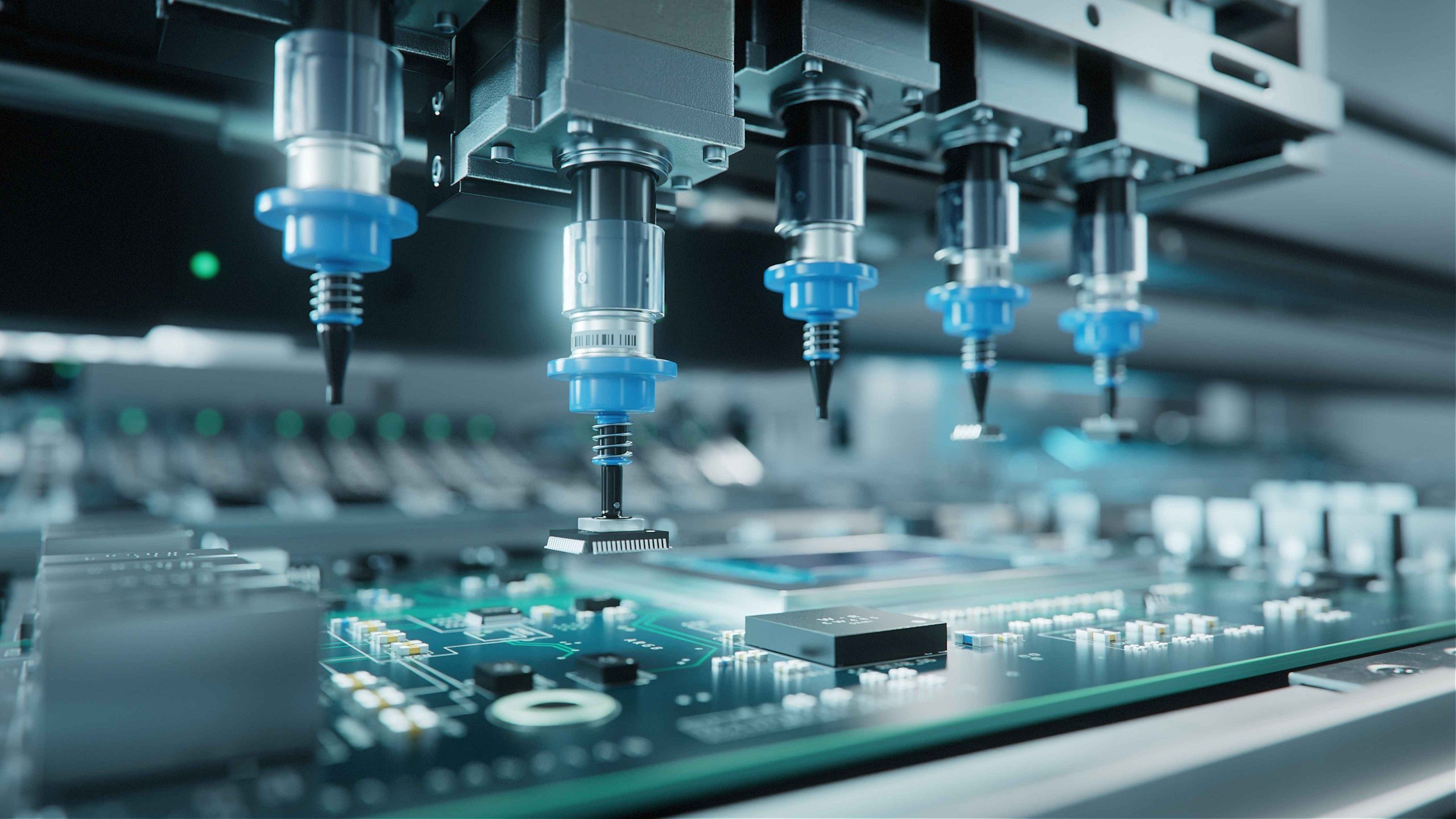
Ideas are intangible, but good ideas are invaluable. An electronic design enterprise or an original equipment manufacturer (OEM) with well-formulated ideas for new products will end up offering a high value through having a different perspective of business and a sharp understanding of their differentiated info designs.
Napino Digital Solutions works with a large number of OEMs that excel at design thanks to their teams of talented engineers. It is hard to find good talent like that and when you do, it is important to create an environment for them where they can do their best work.
Manufacturing electronic products reliably and efficiently require significant investment. This capital and operational expenditure isn’t a one-off cost, either. It takes continued investment to remain competitive. When demand increases, you need to be ready to turn up the dial and maximize the opportunity.
For electronic OEMs, the objective is to ship high-quality products in high volume, and on time, but there are many stages in the supply chain that can derail that objective.
Factoring in these risks, in terms of costs, is not simple. The robustness of your supply chain is just as important as the quality of your manufacturing facilities, test processes, and quality assurance procedures. All of these aspects need to be finely tuned in order to produce high-quality products and respond to changes in demand. This is where a design and manufacturing partner like Napino can really help. The cost of manufacture is quantifiable, even the risk. For an electronic manufacturing outsourcing partner, managing those costs is all part of the service. This is enabled through good engineering talent, class-leading manufacturing and engineering systems, and total adherence to global quality and safety standards.
Napino has over 5,000 highly trained employees located in 9 manufacturing sites across India. Its facilities include state-of-the-art SMT assembly machines, 3D AOI machines, a Class 100,000 clean room, and antistatic workstations. Environmental and Highly Accelerated Stress Testing chambers are used to ensure quality, and Napino also offers certification services for products that must meet specific standards, such as those going into automotive or medical applications.
Benefits of outsourcing electronics manufacturing
1. Bringing down the manufacturing cost
All business operations in the end come to bring down the cost of the finished good. Maintaining a manufacturing setup may take up your expenses through the roof. One of the biggest reasons for OEM manufacturers in India as well as the rest of the world to outsource electronics manufacturing is to reduce labor as well as recurring operational costs.
Once you do electronics outsourcing, you don’t have to spend heavily on machines, location & resources and then maintain them.
Many contract manufacturers will be able to assist OEMs in further cost reduction, for example, by using lean manufacturing techniques, switching out some components for more affordable ones, or using different suppliers.
2. Benefitting from increased purchasing power
An EMS provider has experience with a wide range of products and industries, as opposed to an OEM whose catalog is limited to a couple of products. They also have access to a greater variety of vendors as a result.
They are in a better position to make purchases as a result. In some cases, a contract manufacturer will be able to negotiate a better price by purchasing particular items utilized in many customer products in considerably bigger quantities. These savings can then be passed on to their OEM partner.
Not just to outsource electronics manufacturing in India, a lot of OEMs opt to delegate management of their whole supply chain to their EMS partner. OEMs can feel secure knowing that they are in good hands because the finest providers will have strict protocols in place to vet their suppliers.
3. Getting high-quality end products
Electronics manufacturing outsourcing by OEMs to contract manufacturers like Napino Digital Solutions in India is one smart call, for the proven expertise they offer in manufacturing and value-added services like testing solutions, support in product development, certification, managed services, etc.
A well-connected network formed with raw material vendors, industry bodies, and other OEMs brings in the added advantage. Contract manufacturing experience leads them to set up highly productive and qualitative ISO-certified processes, meeting the expectations of OEM.
With the help of their supply chain and quality team, Napino Digital Solutions scrutinize little details and ensure that their OEM customers get the best quality product while reducing longstanding issues and expanding marketplace competitiveness.
4. Extensive PCB design skills and experience
The assembly of components in a circuit board is a complicated process with numerous variable factors to consider in. That’s why OEMs prefer to outsource electronics design to a team with extensive experience & skills so that they will quickly analyze their BOM and recommend any needed component or circuitry changes.
5. Focus more on designing, marketing, and selling
Usually an OEM business model focus on innovation and product development. They own the product design rights, it’s their intellectual property. Outsourcing electronics manufacturing makes room for innovations and designs in order to stay ahead in a very shifting market landscape. The things that contribute to money making for them. It’s that simple.
Why should you consider India to outsource your electronics manufacturing?
1. Reducing time to market
Outsourcing enables OEMs to focus on their core business operations. They don’t have to go neck-deep into the complex world of circuits & equipment. An established ODM like Napino Digital Solutions helps to reduce time to market whilst improving product reliability and performance.
2. Low Labor Costs and Skilled Labor Availability
The cost & the quality of the product are the two most important factors considered in every company’s go-to-market strategy. The exchange rate of dollars vs rupee & cost-friendly labor helps to lower the overall manufacturing costs. India also beats down other countries in skilled labor because its workforce is digitally sound, young & English-speaking.
3. New initiatives & heavy investment by the Government
The government is taking massive steps to facilitate foreign investments to foster innovation in production. Under the supervision of our honorable prime minister, Mr. Narendra Modi, the Government of India has taken multiple initiatives to promote a healthy environment for the growth of the manufacturing sector in the country:
- The Indian Government has allocated US$ 315 million for the Promotion of Electronics and IT Hardware Manufacturing.
- The PLI for semiconductor manufacturing is set at US$ 9.71 billion. Its goal is to make India one of the world’s major producers of this crucial component.
4. Intellectual Property (IP)
India has an edge over many countries in its copyright laws. India has signed various international treaties with countries on IP rights.
India has been a member of the World Trade Organization (WTO) member since more than two decades. Many rights can be protected with the help of registration like trademarks, designs, patents, and copyright.
Can India become the new electronics manufacturing hub of the world?

“India is rapidly emerging as a preferred country for foreign investments in the manufacturing sector.”, some remarkable words by Indian Commerce Minister.
The demand for electronic devices & products has increased exponentially after the pandemic. Although, the pandemic has had an enormous impact on global production & supply chain networks. The challenging times since 2020 have thrown a hit to almost every manufacturing unit in the world. But miraculously, India has weathered the storm very smoothly. The Federation of India Chambers of Commerce & Industry (FICCI) underwent a study in which it was noted that capacity use in India’s manufacturing area remained at 72.0% in the second quarter of FY22, indicating a big silver lining in the sector. Major inflow in foreign investment in the manufacturing subsectors added up to US $100.35 billion between April 2000 and June 2021 showing the increase in the trend of outsourcing electronics manufacturing. In this competitive landscape, many global manufacturing companies have been shifting their base to India and considering India for their electronic manufacturing outsourcing needs.
Recently, McKinsey’s CEO Bob Sternfels said, “It’s not India’s decade, it’s India’s century” While adding that India will be the world’s future talent factory as it will have 20% of the globe’s working population by 2047. He added India as all the key elements in place – a large working population, multinational companies reimagining global supply chains, and a country leapfrogging at a digital scale – to achieve something special not just for the Indian economy, but potentially for the world.
India is already competitive on a global scale, offering value that is comparable to other low-cost manufacturing regions, such as China, Taiwan, or Vietnam. China’s GDP is heading toward stagnation and hence, it is expected to be seen differently by the world’s markets. Its reputation as the world’s factory was based on being a relatively low-cost center, but the dynamics have changed rapidly, and it is now approaching parity with many other regions around the world. This has helped create the electronic manufacturing outsourcing industry of India, which is still able to deliver high-quality and affordable services.
Apart from to outsource electronics design, More manufacturing is going to other regions, India is already ranked as number 2 in the Asia Pacific region after China. Some analysts expect it to take a position in the top 15 most competitive manufacturing countries in the world.
Foreign investments, a young labor force, proper infrastructure & huge government initiatives make a solid case for India to become the future manufacturing hub of the world. And the case becomes even stronger when it comes to electronics manufacturing.
After dominating the service sector, it’s time for India to dominate manufacturing as well and head towards becoming a global manufacturing hub.
Now is the time to explore the benefits of outsourcing your manufacturing to India. Napino is a leader in this industry, with the resources, technology, and infrastructure to meet your manufacturing needs.
Believing in the vision of India, Napino Digital Solutions with its decades of experience is ready to build world-class products for you.
FAQ’s on Outsourcing Manufacturing
What is manufacturing outsourcing?
Electronics manufacturing outsourcing refers to the practice of contracting a third-party (EMS provider) outside the company to handle the production of electronic components or products. The main reason why major companies outsource manufacturing is to save business time and money while staying ahead of competitors.
How does contract manufacturing work?
Contract manufacturing is when one company enters into a contract with another country to produce components or products over a specific period. It allows companies to produce and sell products without having to invest in their own equipment, machinery, and other production resources.
What types of manufacturing processes can be outsourced?
The manufacturing process can be outsourced at various stages of a product’s development ranging from hardware design, prototype development, and PCB assembly, to mass manufacturing, so basically electronics outsourcing is possible at any stage.
Read More: Napino gets selected under the PLI scheme for White Goods





